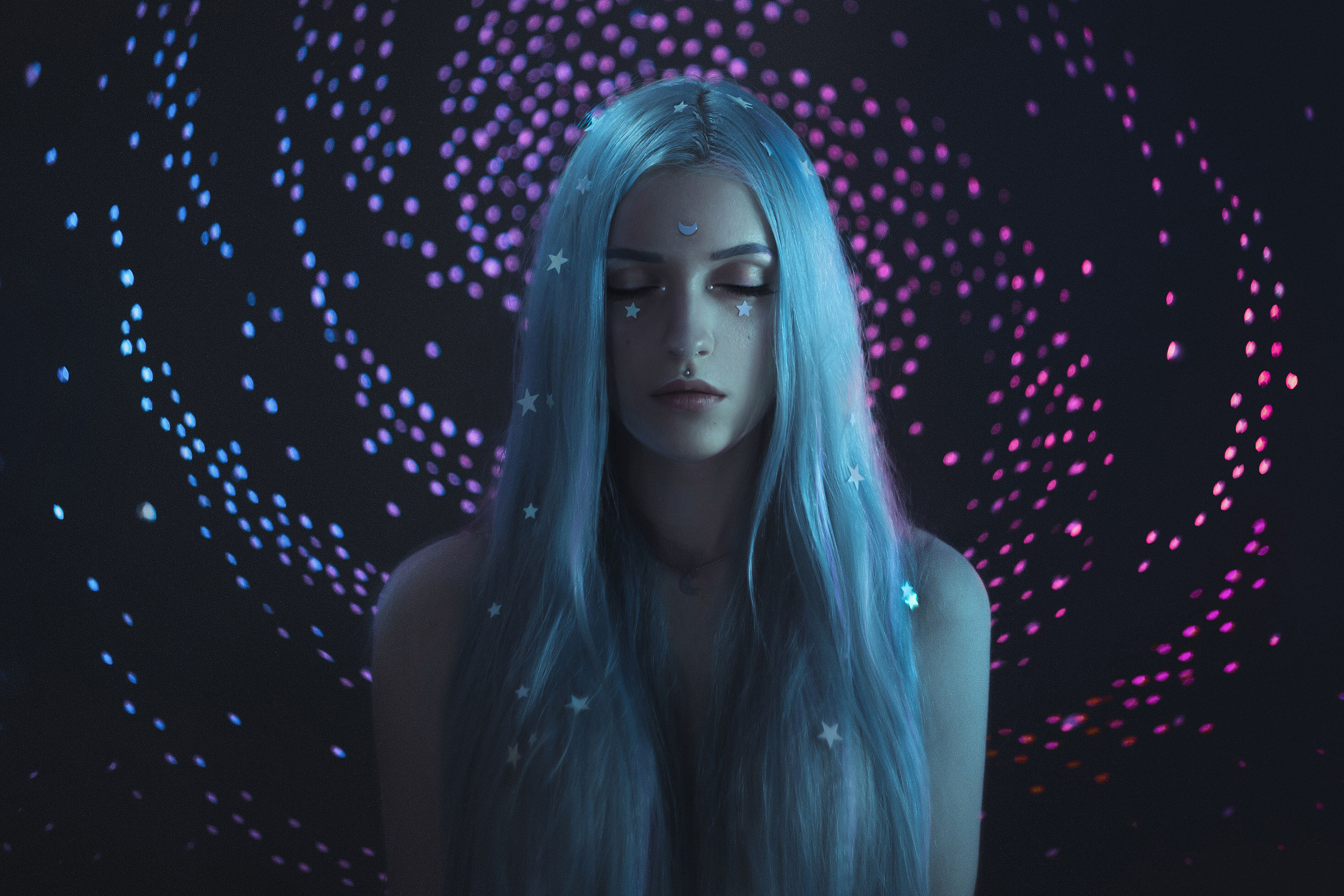Bokeh is the aesthetic quality of the blur produced in the out-of-focus parts of an image produced by a lens. Bokeh occurs in parts of the scene which are lying outside of the depth of field. Bokeh is often most visible around small background highlights, such as specular reflections and light sources, which is why it is often associated with such areas.
I did this photoshoot in my apartment in Brooklyn. I've already done creative bokeh backdrops before several years ago, so this technique was not new to me. The idea came up to me when I decided to do a galaxy inspired photoshoot. I didn't want to just add the background in Photoshop so I thought about making a DIY backdrop with a real light effect.
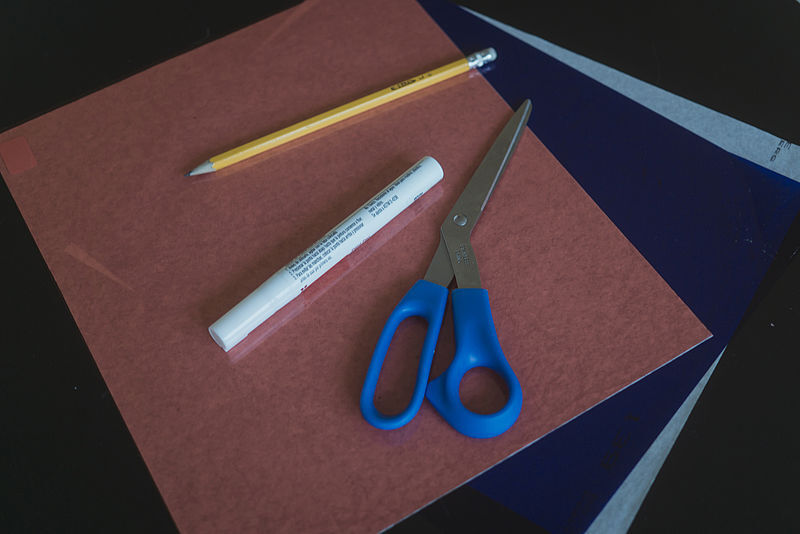
So for making a creative bokeh background you need a fast lens, a light source and something to make a desirable pattern on, which in this case was a studio paper backdrop, and obviously a model, which in this case was myself. Also you need something to draw a shape with, for example a marker, and something sharp to make holes in the paper. I used scissors and a sharpened pencil. You can experiment and use this technique for creating any shape you want. For this photoshoot I made bokeh holes in a shape of a galaxy. The holes don't have to be perfectly rounded, but you may make them so and a pencil helps in this case. However, some good background separation and the proper aperture will smooth out the jagged edges.
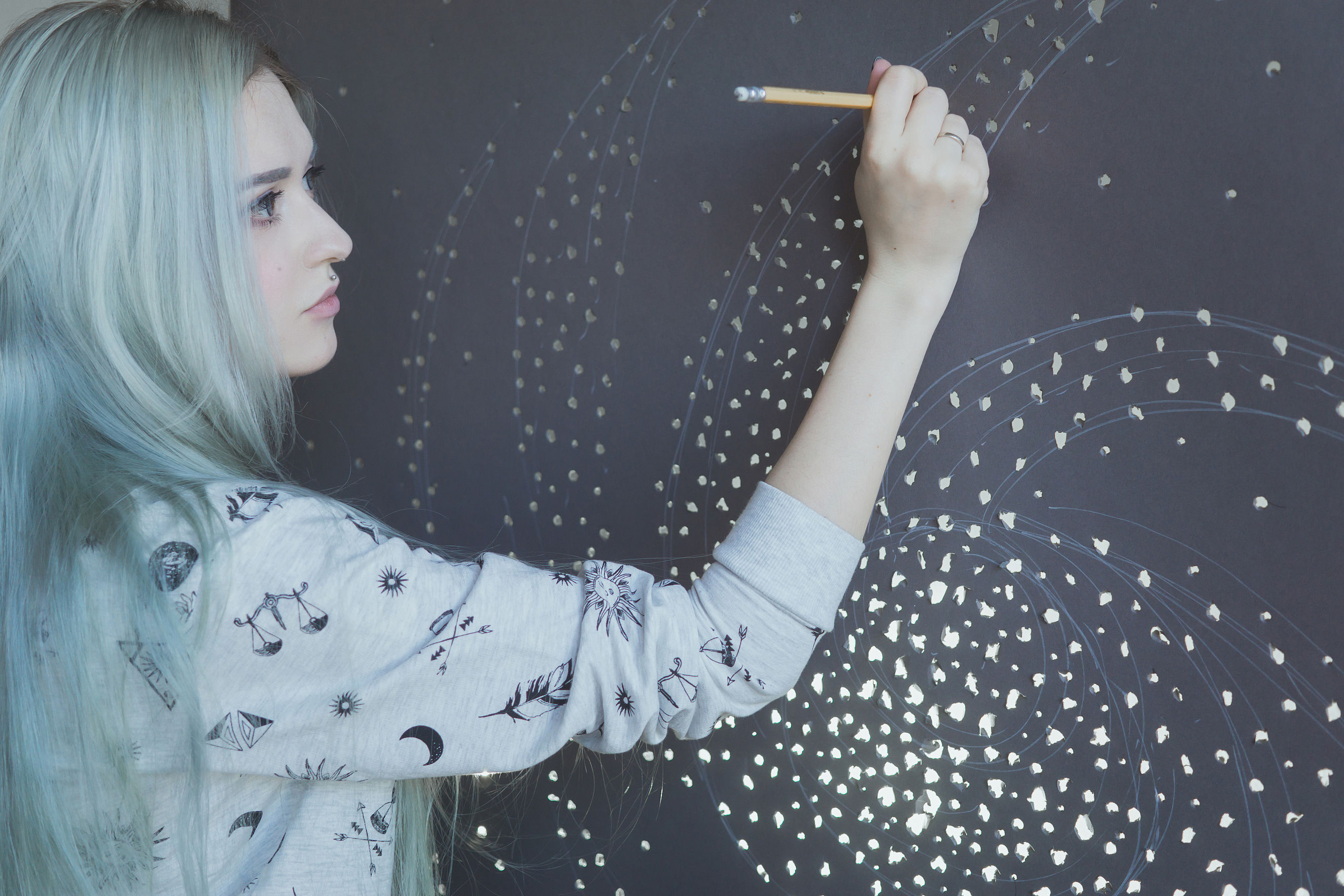
As a light source you may use any kind of flash light starting from speed light flashes to studio flashheads. You will need to put at least one light behind the backdrop to illuminate the holes so the light will come through the holes creating bokeh highlights on your photographs. For my photo I used my two Move 1200L kits with two Mobiled flashheads with color gels attached to it (one blue and a red one) which I've put behind the backdrop.
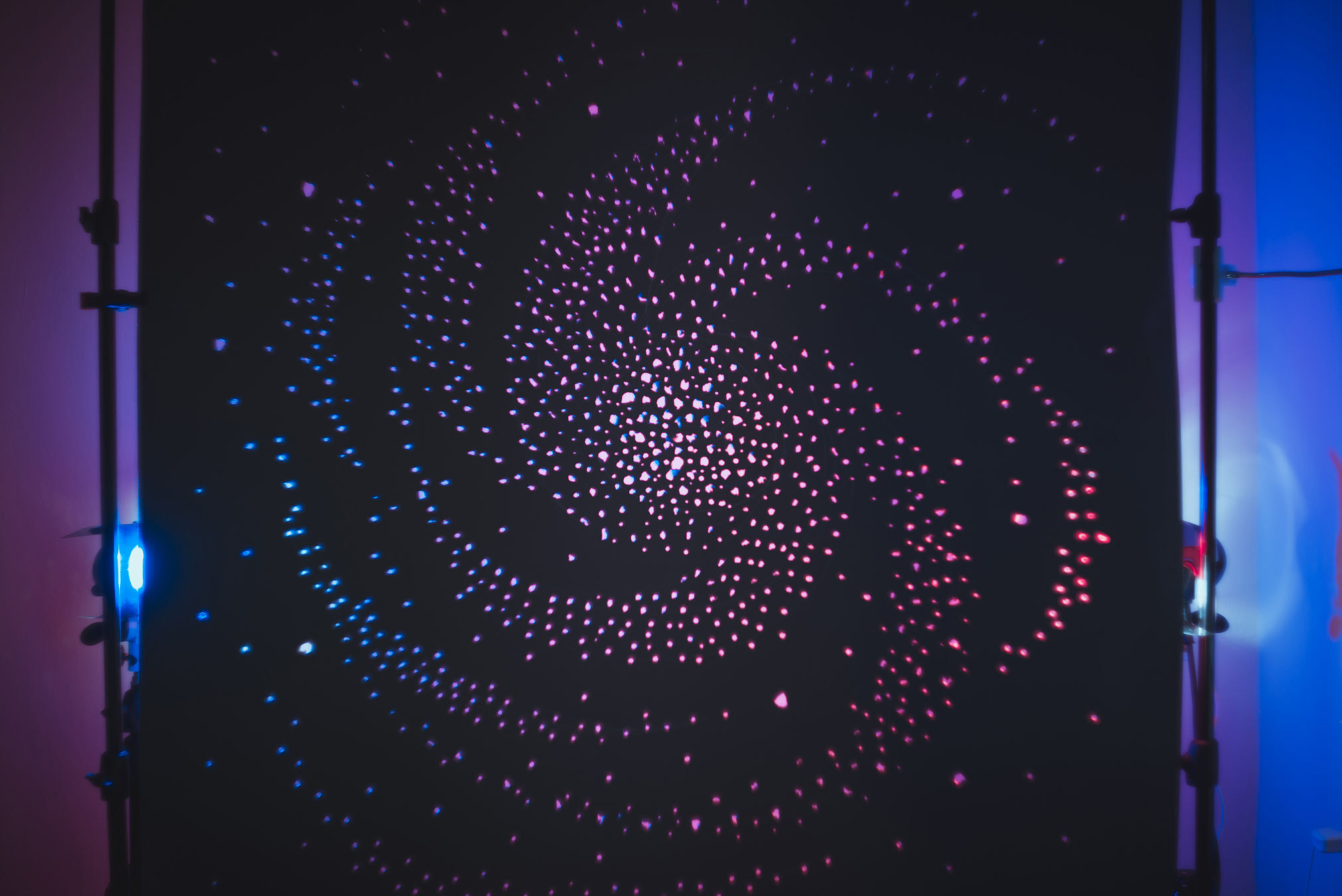
For the rest of the scene I wanted to create a dark and dramatic light. So I didn't use any direct key light. One Mobiled flashhead was standing on my right side a little behind and up with a snoot attached as a lightshaper. It was directed to the other corner where a reflector was. So a part of the light from the snoot made a contour upper light which you may see on my hair and the reflector created a very soft and subtle key light. And the last flashhead was lying on a couch in front of me with lots of white fabric layers to make a very slight fill light to the other side of my face to soften the shadow.
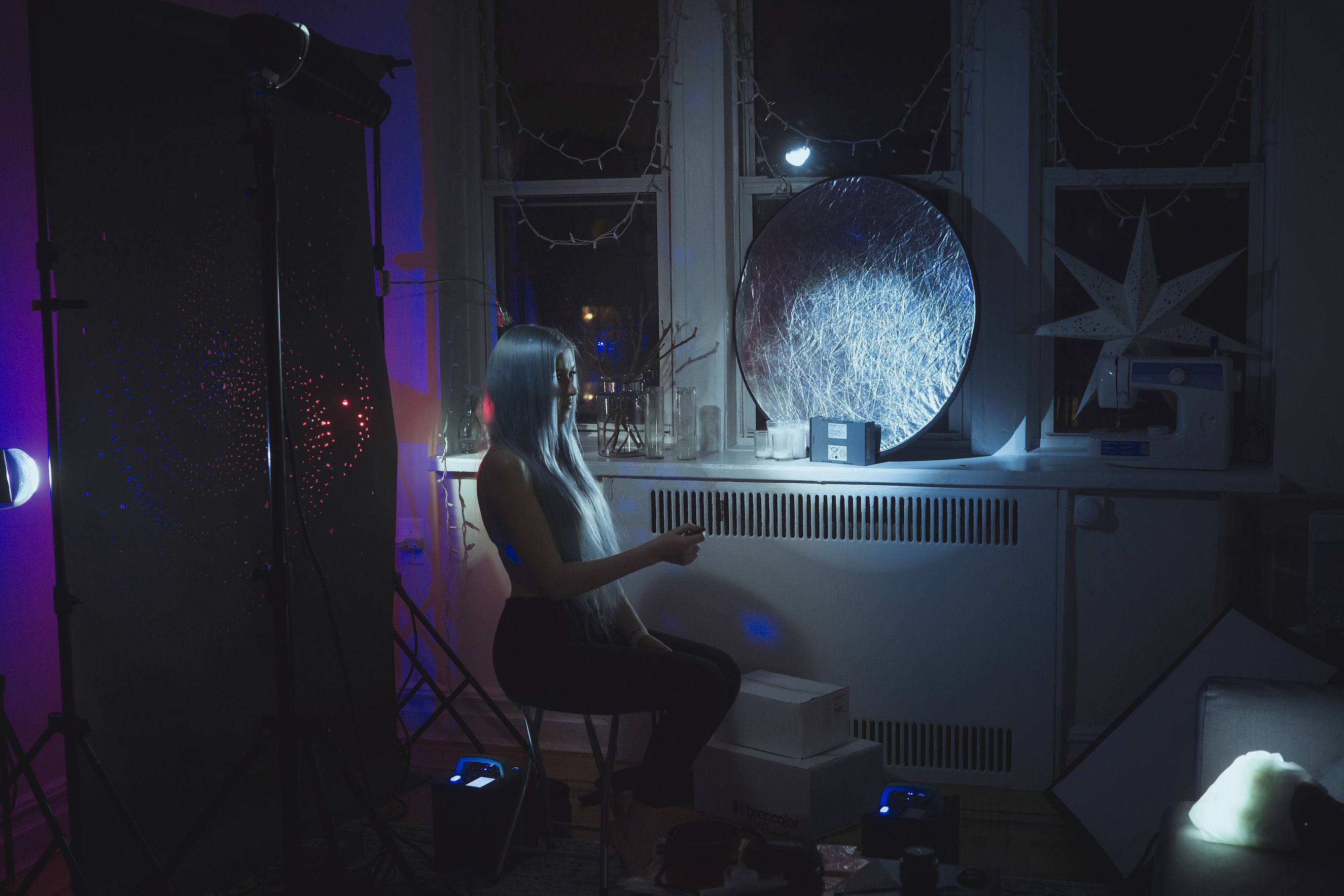
In a time of digital art and advanced Photoshop skills we often forget that you achieve the best results by making real effects with photoshoot props. Yes, I do a lot of edit on my photographs, but I always try to make and build as much as possible on my set. This helps me create my scene more real and believable and also gives my work a recognizable look. I love DIY and making things with my own hands. It helps me keep my mind working, stay creative and experiment a lot.
